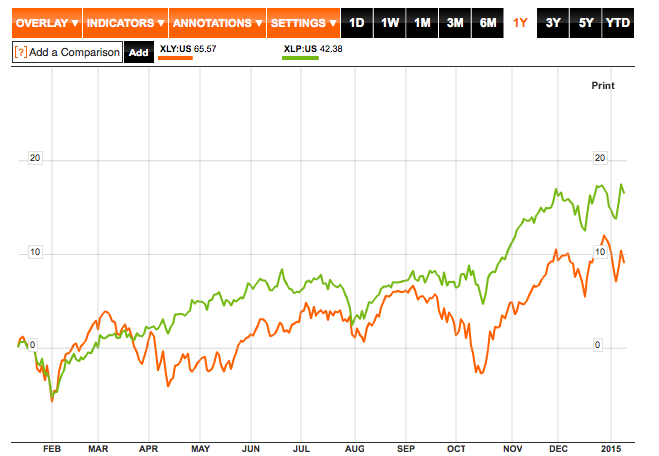Much has been made about the roaring comeback of the U.S. consumer. And there’s certainly some reason for cheer.
Although the final data isn’t in yet, it does appear the U.S. just finished up one of its strongest holiday shopping season in years. The National Retail Federation sees a 4.1% increase to $616.9 billion.

Be wary
The job market is strong, gas prices have tumbled to five-year lows and consumer confidence is on the rise.
Yet investors should be discerning before rushing into consumer-focused stocks.
Some companies are better-positioned than others to profit from the consumer spending rebound.
Other players such as Sears Holdings (SHLD), RadioShack (RSH) and J.C. Penney (JCP) face management and strategic challenges that have little to do with the macro-environment.
Also, a little perspective is in order regarding the true health of American household budgets.
Wage growth
Yes, American consumers have loosened their grips on their wallets. But we aren’t likely to see a return to the free-spending ways of the mid-2000s or late 1990s.
While the job market has come roaring back, dropping the unemployment rate to a six-year low of 5.4%, income levels have not.
Wage growth has been all of 2% this year and median household incomes have declined $5,000 since 2007.
Investors need to be discerning about the depth of the consumer spending rebound and adjust their strategy accordingly.
Consumer staples
Consumers seem to have the wherewithal to spend more on consumer staples (food and household goods) but not necessarily splurge on consumer discretionary items like wide-screen tvs and luxury goods.
That’s pretty much the story when you look at the following chart showing the SPDR Consumer Staples Select Sector ETF (XLP) handily outperforming the SPDR Consumer Discretionary Select Sector (XLY) fund over the past year.

When it comes to individual companies, mid-market rather than high-end brands are perceived to have the edge, at least short term, as long as wages lag overall economic growth.
Macy’s (M) is the largest department store chain in the U.S. and has been cutting expenses and buying back shares aggressively. Earnings per share up was 15 percent in 2014.
Some 71% of analysts tracked by Bloomberg have a buy recommendation on Macy’s, compared with just 38% for the more upscale brand Nordstrom (JWN).
Mid-tier retailing names such as Gap (GPS), Wal-Mart (WMT), Bed, Bath & Beyond (BBBY), and Costco (COST) saw their shares rise dramatically as oil prices tumbled in the fourth quarter of 2014 and continue to do well.
In contrast, upscale jeweler Tiffany (TIF) had a bleak holiday season and cut its full-year profit forecast, which sent its stock tumbling on Jan. 12.
Takeover
Things are looking up for U.S. consumers and household budgets.
But make no mistake: It will take a prolonged period of economic growth and, most importantly, sustained wage increases to make up for the lost ground in recent years.
Investors looking for consumer spending plays in 2015 might want to focus on companies that deliver everyday goods at reasonable prices before venturing into the luxury brands.
Things are good, but not that good.
Continued Learning: Should you be shopping for retail stocks?
DISCLAIMER: The investments discussed are held in client accounts as of December 31, 2014. These investments may or may not be currently held in client accounts. The reader should not assume that any investments identified were or will be profitable or that any investment recommendations or investment decisions we make in the future will be profitable. Past performance is no guarantee of future results.




